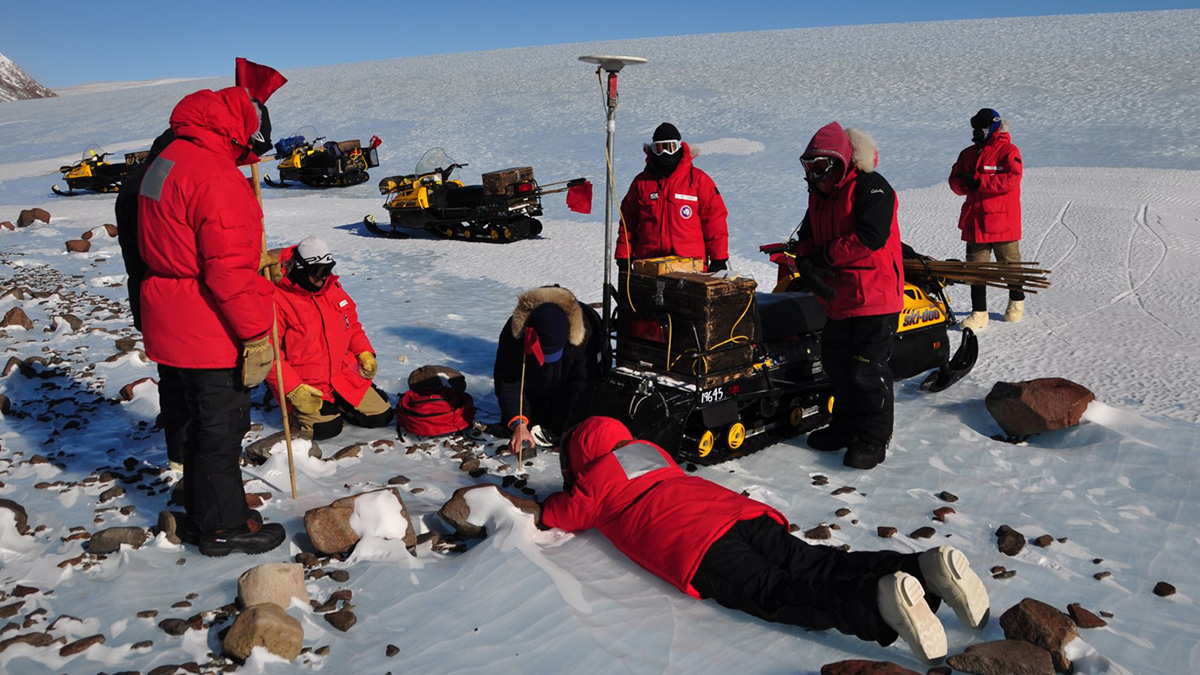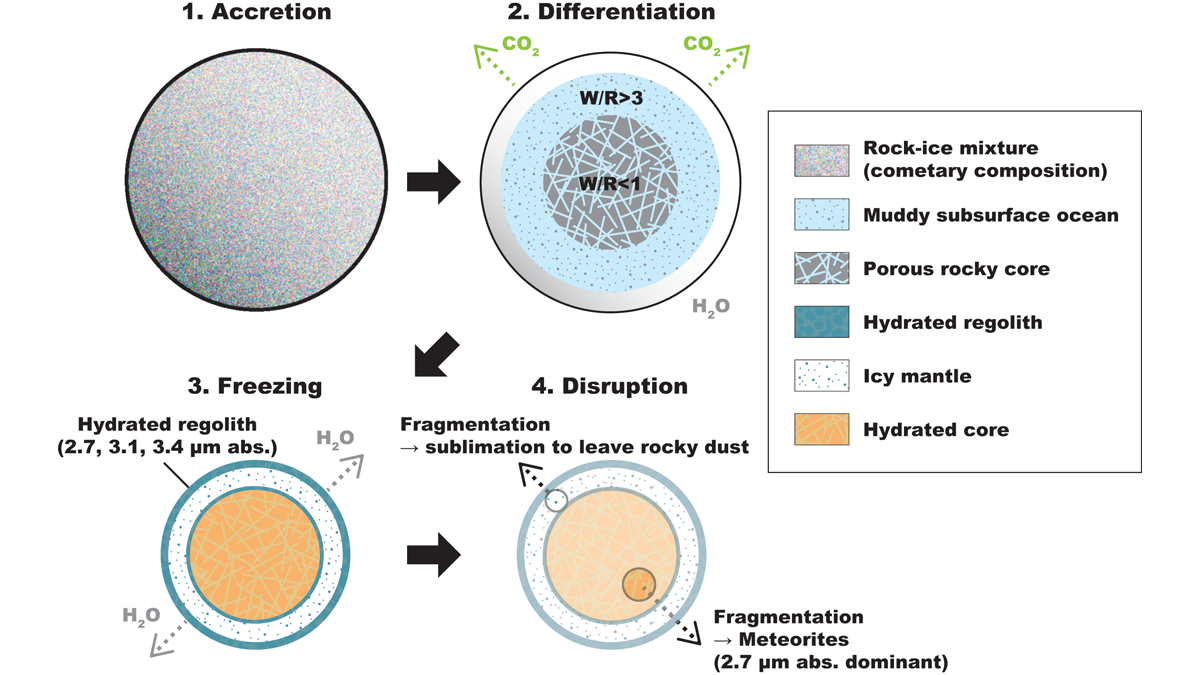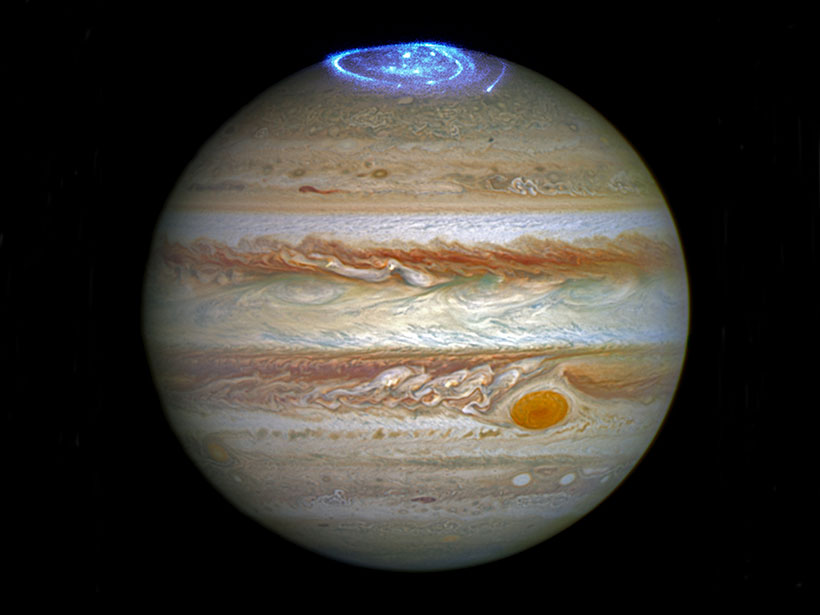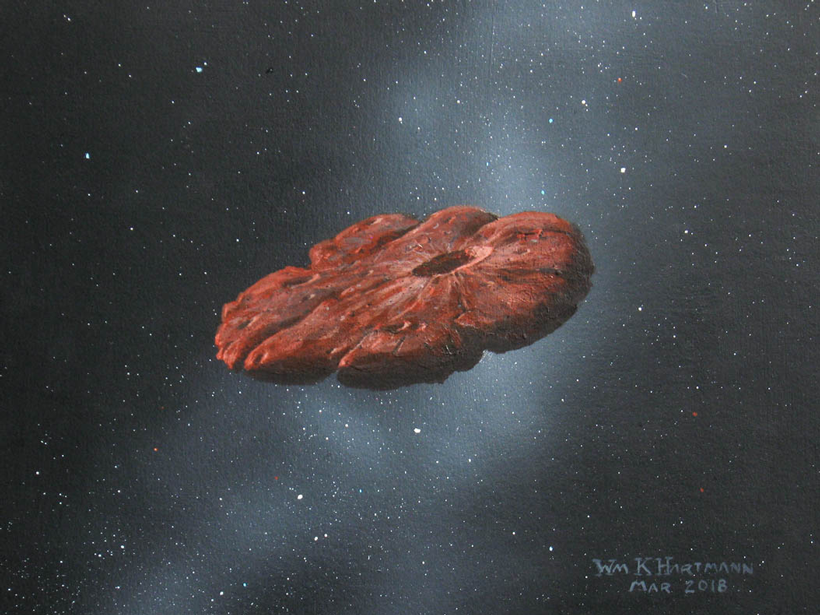The low density of Kuiper Belt Object Arrokoth sheds light on the formation of planetesimals in the early solar system.
solar system
Dynamics of Ocean Worlds Likely Controlled by Their Rotation
New simulations suggest that subsurface oceans on icy moons with small natural Rossby numbers may be dominated by rotational effects.
Pluto’s Surface Was Recently Sculpted by Icy Volcanism
Geologically young regions of Pluto’s southern hemisphere were likely resurfaced by cryovolcanism, data from the New Horizons spacecraft reveal.
Machine Learning Pinpoints Meteorite-Rich Areas in Antarctica
A new algorithm suggests that only a small fraction of meteorites present on the White Continent’s surface have been recovered to date.
A Deep-Space Origin for Volatile-Rich Asteroids
Spectral data and modeling suggest that volatile-rich main-belt asteroids initially formed at much greater distances from the Sun (>10 AU).
A Transition Zone Below Jupiter’s Clouds
The microwave radiometer aboard NASA’s Juno spacecraft reveals the hidden atmospheric circulations at work deep below Jupiter’s colorful clouds.
Could Low-Altitude Reconnection Power Jupiter’s Polar Aurorae?
Magnetic reconnection events less than 2 Jovian radii above the planet’s cloud tops could explain why Juno has yet to observe a source for Jupiter’s polar aurore.
Magnetic Record of Early Nebular Dynamics
Magnetized particles in a meteorite suggest strong magnetic fields in the early solar nebula.
Juno Detects Jupiter’s Highest-Energy Ions
Trapped ions discovered at midlatitudes can have energies exceeding 100 megaelectron volts per nucleon. Their detection adds to our understanding of the powerful radiation environment around Jupiter.










